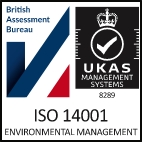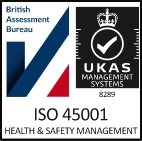Biodiversity Net Gain (BNG) and Minor Applications: What You Need to Know
As of April 2024, minor planning applications are included in the statutory requirement for Biodiversity Net Gain (BNG). Whether you’re planning a new home, extension, or a small-scale development, here’s what you need to know.
What is Biodiversity Net Gain?
BNG is a planning policy requirement that mandates a minimum 10% net gain in biodiversity value post-construction, compared with the pre-development baseline. This gain must be measured using an approved biodiversity metric and secured for a minimum of 30 years through legal agreements or planning conditions.
On-Site vs. Off-Site BNG
BNG should ideally be delivered within the site but there is provision for off-site BNG units where this is not possible. This could be through purchasing biodiversity units from a third-party provider or using additional land in your control.
What Does an Ecologist Do?
Your ecologist plays a key role in achieving BNG compliance:
- Habitat Mapping: They will visit the site to map and classify all existing habitats.
- Habitat Condition Assessment: Each habitat is evaluated based on condition criteria set by Natural England.
- Baseline Calculations: The current biodiversity value is measured using the DEFRA BNG metric.
- Post-Development Predictions: The proposed site layout is used to calculate the biodiversity value after construction.
- Net Gain Assessment: The difference between pre- and post-development values is analysed to determine compliance.
- Reporting: They will provide a formal BNG Assessment Report and plans for submission with your planning application.
What Do We Need from You?
To complete the assessment, we require:
- A clear red line boundary plan (this must match your planning submission).
- Your proposed site plans, preferably in a digital format compatible with our GIS software.
These documents are essential for accurately calculating baseline habitats and forecasting BNG outcomes.
Exemptions from BNG for minor applications only:
Some projects may be exempt under specific criteria:
- De minimis exemption: Applies where there are no impacts on priority habitat and limited to:
- Less than 25m² of vegetated habitat, or
- Less than 5 linear metres of habitat such as hedgerows.
- Self-build properties: These may be exempt, but local authorities often apply conditions (e.g. owner occupation for a minimum period).
A Note on Gardens and Habitat Creation
Private gardens generally cannot be used to demonstrate BNG improvements. Even if new trees or wildflowers are planted, these areas are classified as low-distinctiveness garden habitats in the DEFRA metric. This is because long-term monitoring and management in gardens cannot be reliably enforced. The only exception is where existing non-garden habitats are retained within a new garden and recorded as such.
Choosing the Right Metric
While the Small Sites Metric exists for minor developments, it has notable limitations. It often assumes all habitats are in moderate condition, which can overestimate baseline biodiversity. For this reason, we—and now CIEEM guidance—recommend using the statutory (full) BNG metric wherever possible, even for small sites.
What Happens After Planning Permission?
If your development is approved, BNG will likely be conditioned as part of the consent. To discharge these conditions, you may be required to:
- Submit a BNG Plan using the DEFRA template.
- If required prepare a Habitat Management and Monitoring Plan (HMMP) for significant on-site BNG contributions.
- Enter into a legal agreement if using off-site units.
All habitats must be maintained and periodically monitored for at least 30 years post-completion.
Ready to Get Started?
We offer a free online BNG estimation tool to help you understand what’s needed for your project. You can also book a call with one of our ecologists to discuss your development and how best to meet the new BNG requirements.
Get your minor project BNG estimate here
For more information, Biodiversity net gain – GOV.UK







